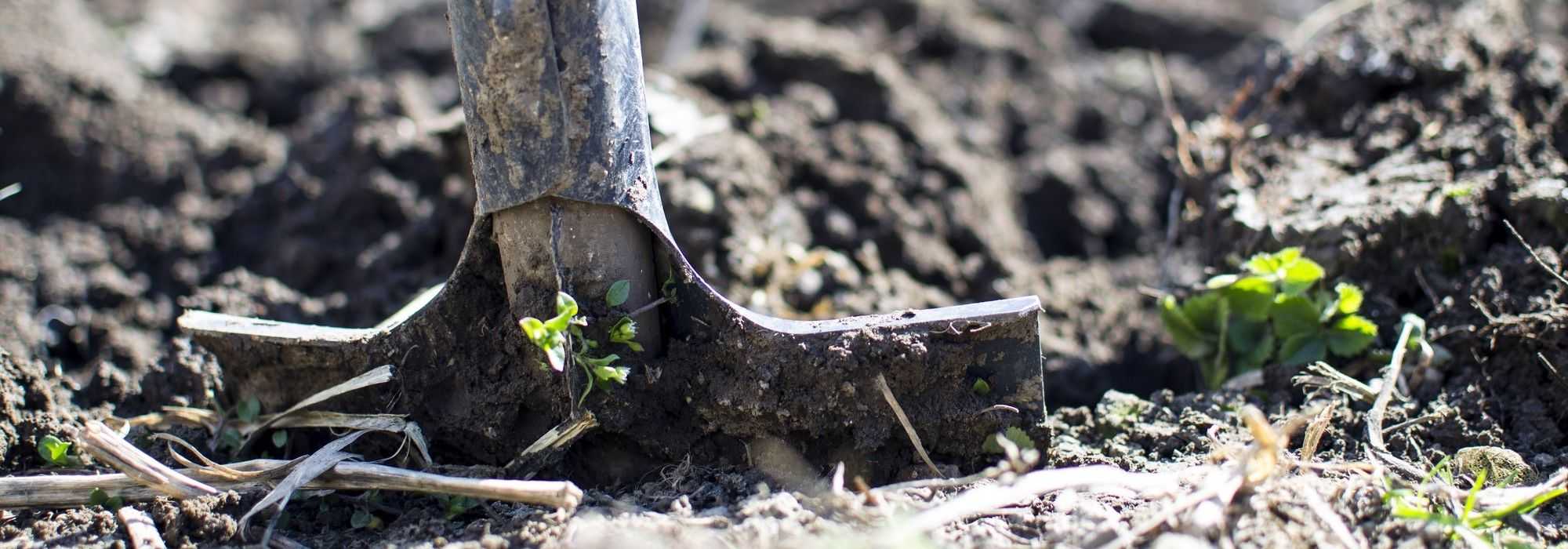
Gardening in heavy, wet soil
Ornamental garden and vegetable garden
Contents
When it rains, you get stuck in your soil as if someone had coated your boots with glue. During drought, you’d swear your flowerbeds and vegetable plots came from the Sahel. No doubt, your soil is heavy. It used to be said it was in love because it literally sticks to your skin… And that is due to the high clay content of your soil. But that’s not a disaster; on the contrary, it’s soil that holds nutrients and water well. Two qualities that enable it to grow superb plants provided they are suited and that care has been taken to apply good practices to improve it.
Also discover our advice on making soil more free-draining.
How to recognise heavy soil?
The sausage or clod test
Take a good handful of slightly damp soil and roll it into a “sausage” between your hands. If you manage to create a “perfect sausage” without cracking: you have a soil dominated by clay, therefore heavy.
Another very quick technique is to roll a small slightly damp clod of soil. Throw it vigorously onto a hard surface (patio, bathroom tiles, …). If the clod remains intact: you have a soil dominated by clay, therefore heavy.

Clod test
Analysis using a jam jar, or more scientifically called the “sedimentation test”
Soil is very rarely only sand, only silt or only clay. It is often a skilful mix of the three. The sedimentation test is easy to carry out: put some soil in a glass jar of water and wait for the different components to settle. You will thus know the sand, silt and clay content of your soil.
→ To learn more about determining the nature of your soil, read our advice sheet “Determine nature of your soil: clayey, sandy, silty, …“
Observe your “weeds”
Native flora often tells us a lot about soil: this is the case with indicator plants. Greater and lanceolate plantains (Plantago major et P. lanceolata) grow on heavy, wet and especially compacted soils. Creeping buttercup and goldilocks buttercup (Ranunculus repens et R. auricomus) also favour heavy, clayey and wet soils. Gesses and vetches (Lathyrus sp. et Viscia sp.) will also be present on this type of soil but provide another clue: nitrogen is absent or very poorly available (which can happen if soil is too compact). Field horsetail (Equisetum arvense) indicates heavy, asphyxiated and probably waterlogged soil. Other plants can also help define your soil as heavy: thistles, sowthistle, Persicaria knotweeds, … If you have all this wild flora in your garden: you have heavy, wet soil.
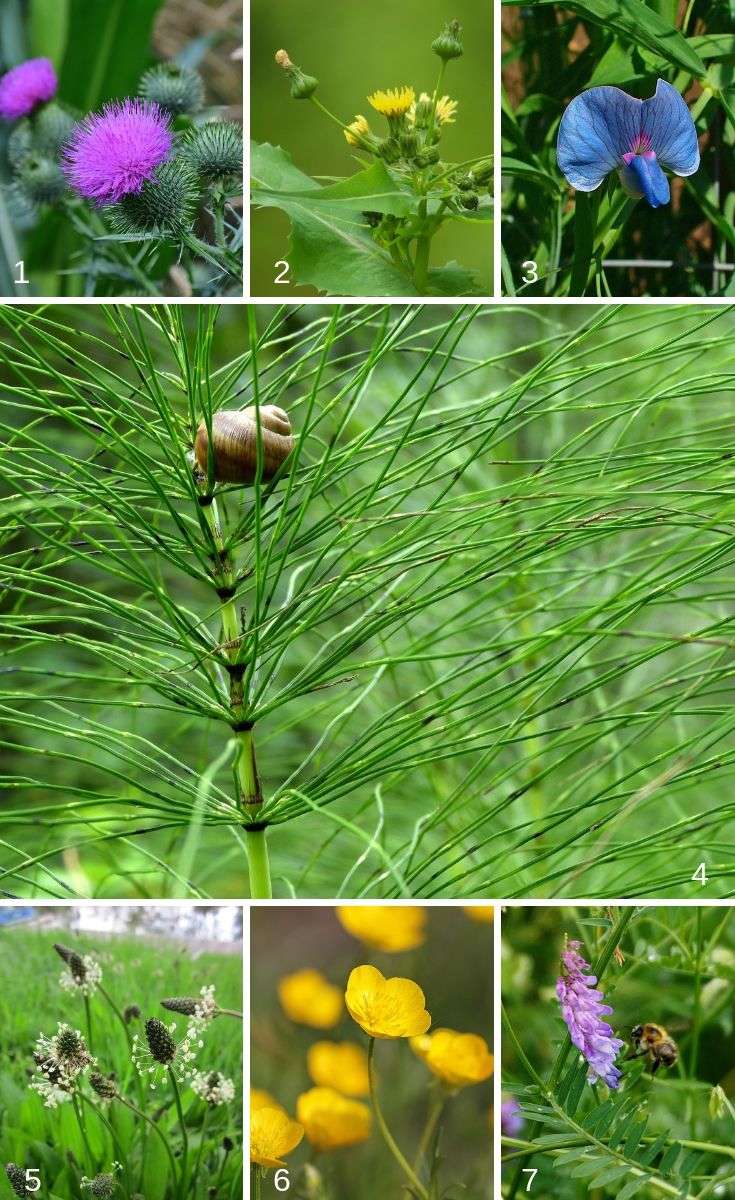
Some bioindicator plants of clayey, wet soil: 1-thistle, 2-sowthistle, 3-vetchling, 4-horsetail, 5-plantain, 6-buttercup, 7-vetch
Conversely: chickweed (Stellaria media) is one of the indicator plants of neutral, well-structured and aerated soil. If this plant turns up in your garden, consider yourself lucky!
How can I improve heavy, waterlogged soil?
Add organic matter
Anything that improves it: leaf mould, well-rotted compost, decomposed manure, … Everything helps. Either apply it as a mulch that is not too thick; soil fauna will incorporate it into the soil for you. Bear in mind, clay soils are slow to warm in spring and are often very compact, and a thick mulch exacerbates both problems. Or lightly fork the material in in late autumn or mid spring. Adding flax straw can also be a good idea to improve structure of an overly heavy soil.
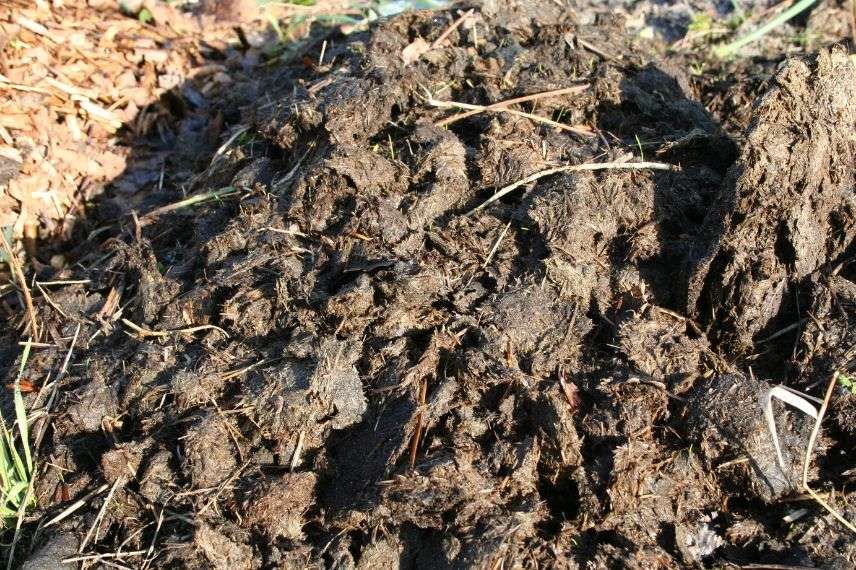
Decomposed manure
Sand or gravel: good or bad idea?
It is often suggested that to “lighten” a heavy soil one should add sand. However, this will cause an extremely radical change in your soil which can switch overnight from clay to sand, bringing serious imbalances in soil life. Let us not forget that soil is not a sterile substrate but an ecosystem in its own right with fauna and flora working day after day to give you good soil. Moreover, river sands sold in DIY stores are often treated with various fungicidal and insecticidal agents. Best avoided if possible or used only in tiny amounts…
If necessary, you can improve drainage for a plant sensitive to excess water by mixing gravel with the soil from the planting hole. This solution is better than simply adding gravel to the bottom of the hole because drainage will be distributed around the roots rather than acting as a kind of drain beneath the plant.
Work the surface
Bare soil quickly becomes compacted and impenetrable, preventing gas exchange and water from reaching plants. Roughen it regularly, especially in dry periods, using a grub hoe, a hand fork, a hoe, … Isn’t it said “one hoeing is worth two waterings“? This proverb is even truer in heavy soil.
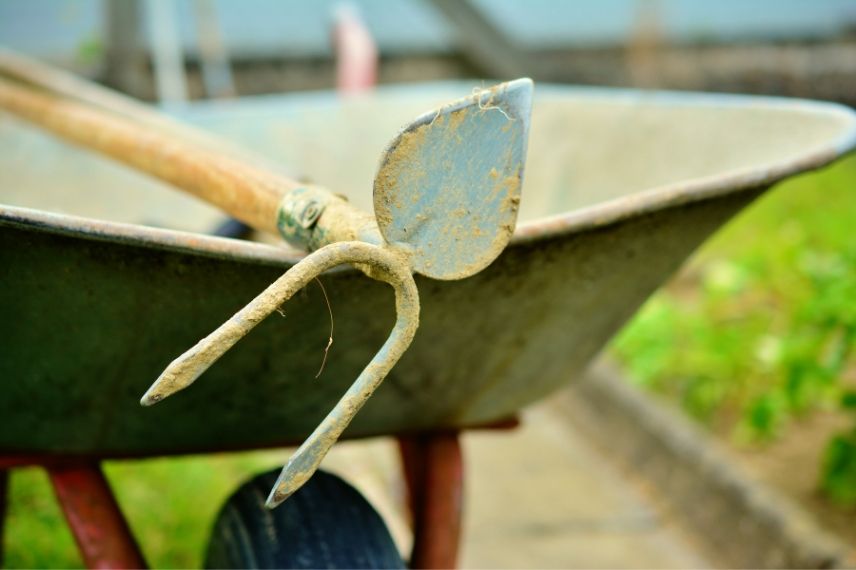
Cultivate the soil regularly!
Of course, best is to never leave soil bare: apply a light mulch to retain moisture or plant densely to minimise bare soil. You can also consider groundcover plants that will help retain moisture and prevent growth of adventive plants, while being very attractive.
Avoid soil compaction
Do not walk on heavy soil and do not place heavy loads on it either. Clay soils compact very quickly, especially when wet. If you must walk in borders or vegetable beds, consider using boards that will spread weight over a large area. This is the same principle behind the large, wide wheels of farm tractors.
Draining a heavy clay soil: effective or not?
Clay soil is heavy and compact by definition. Major drainage works will not be effective in any case. At a stretch, you could re-shape garden levels to direct excess water towards a stream or pond, but that remains monumental work to be undertaken only as a last resort. The best and simplest approach is to improve soil structure (see above).
If part of your garden is very wet, even marshy, why not try digging a natural pond there? True treasures of biodiversity, natural ponds are also very attractive. If you want to know more, this helpful brochure will give you everything you need to know before you start.
please note : if the soil is really too problematic to cultivate significant botanical diversity, as might be the case for a vegetable garden, you could opt for container growing, raised beds, lasagne gardening, …
Discover other Plants for heavy soil
View all →Available in 1 sizes
Available in 2 sizes
Available in 2 sizes
Available in 1 sizes
Available in 2 sizes
Available in 3 sizes
Available in 1 sizes
Available in 2 sizes
Available in 1 sizes
Available in 1 sizes
Make the best of it: most suitable plants
Fortunately, heavy, wet soils allow many plants to grow very well: many trees and bushes, of course, but also plenty of perennials and even vegetables. It is often unnecessary (and complicated) to try to change your soil and wiser to plant only species suited to your garden.
In the vegetable garden
Chard (or silverbeet), spinach, chicories, peas, beans, artichokes, cabbages and even tomatoes, peppers and aubergines do very well. Special mention for broad beans, sorrel, rhubarb and mint.
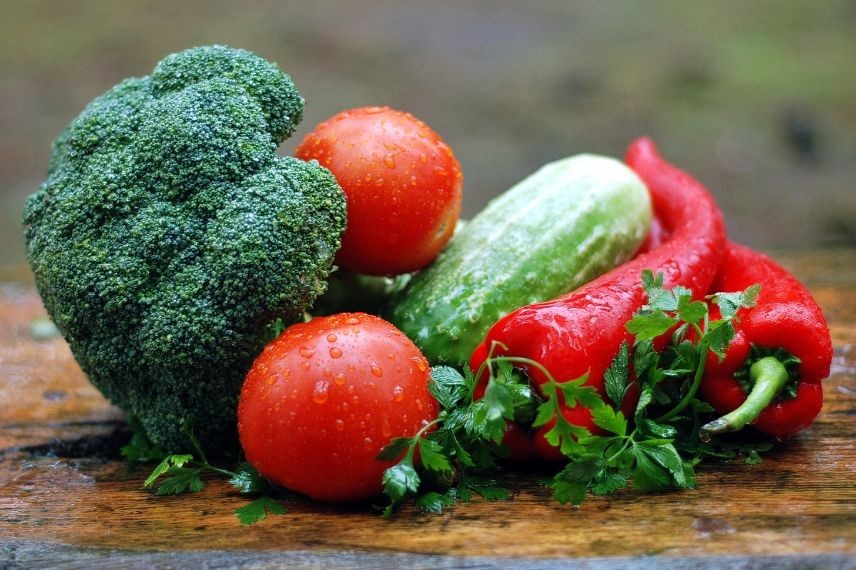
Root vegetables generally dislike soils that are too heavy, but from experience beetroot and especially parsnips get on fine.
In the orchard
Apple trees, cherry trees, currant bushes (redcurrants and gooseberries), blackcurrant bushes, thornless brambles, hazels, raspberry canes, strawberry plants and even… vines love to put their roots into clay soil.
For more unusual fruit trees, you could try: Amelanchier, Aronia, Staphylea or Lonicera kamtschatica.
In the ornamental garden
Trees: alders, birches, hornbeams, oaks, cypresses, maples, ashes, liquidambars, horse chestnuts, walnuts, elms, poplars, willows, tulip trees, …
Shrubs: whitebeams, Judas trees, hawthorns, Kerria japonica, dogwoods, forsythias, hollies, mahonias, pieris, photinias, mock oranges, elders, viburnums, weigelas, … and the majority of roses.
Perennials: acanthus, yarrow, columbines, Japanese anemones, Aruncus, asters, avens, bergenias, coreopsis, delphiniums, echinops, Filipendula, hardy geraniums, hellebores, daylilies, hostas, marsh irises, lupins, Lychnis, miscanthus, Persicaria knotweeds, primroses, violets, …
Climbers: clematis, hops, ornamental vines, …
Bulbs: daffodils, snowdrops, ornamental alliums, Anemone blanda, tulips, lily of the valley, …
Annuals: nasturtiums, snapdragons, nigella, …
- Subscribe!
- Contents
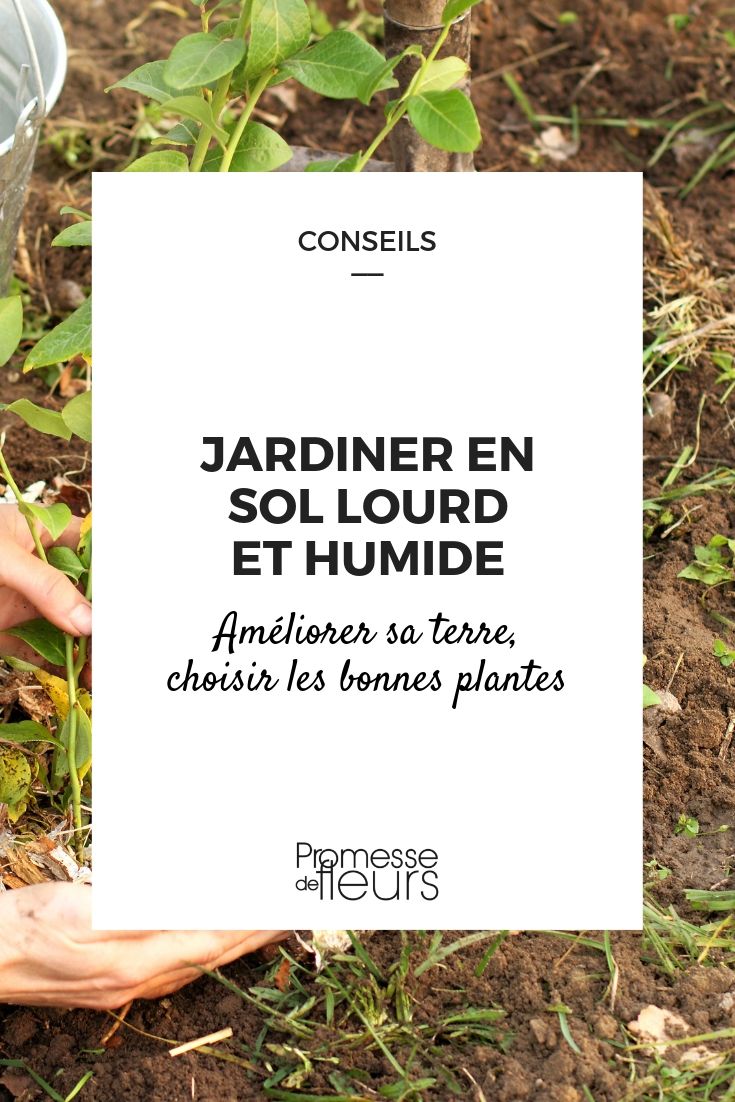
































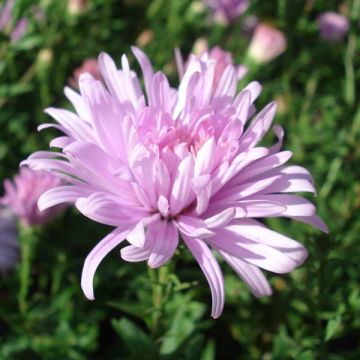
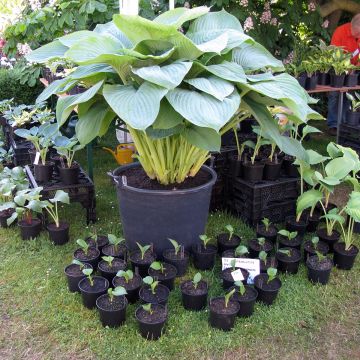
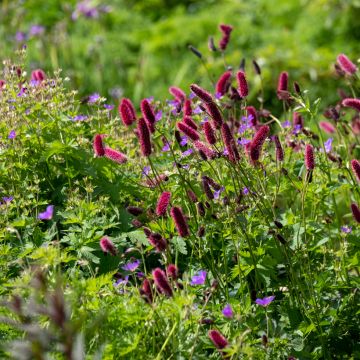
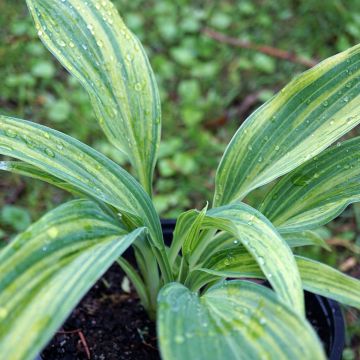
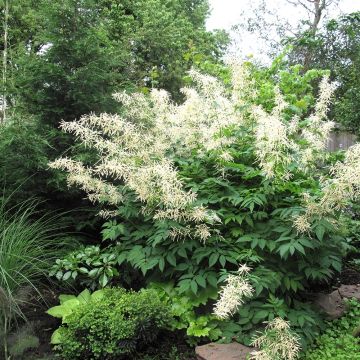
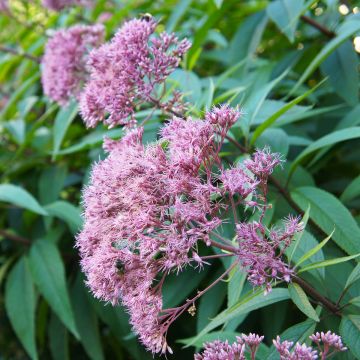
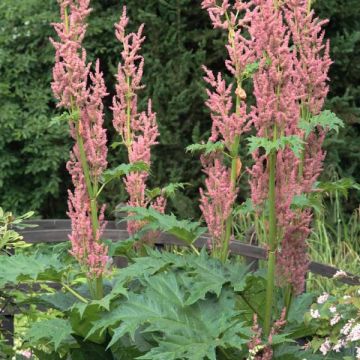

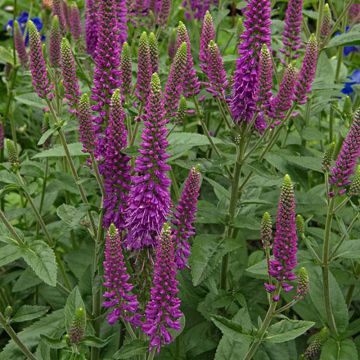
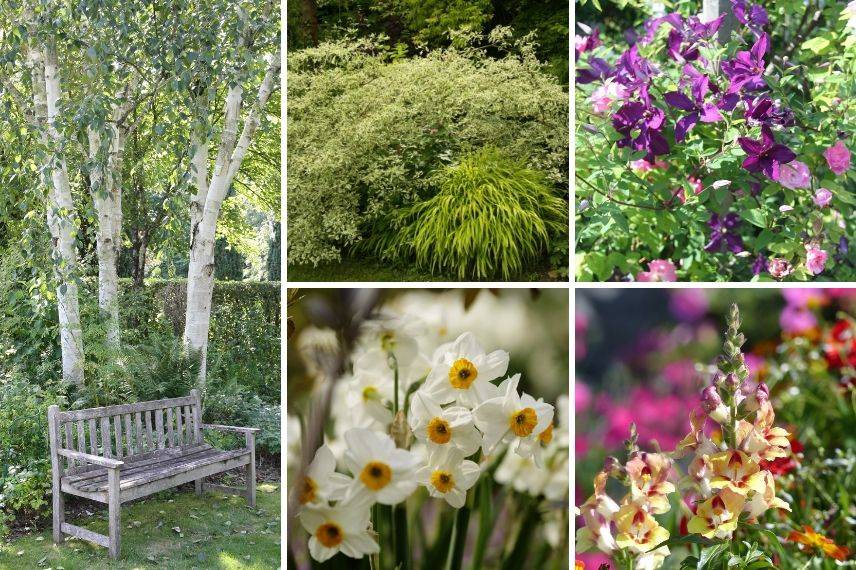
Comments